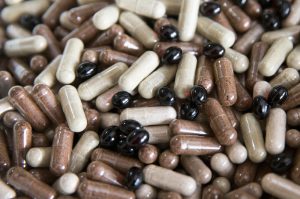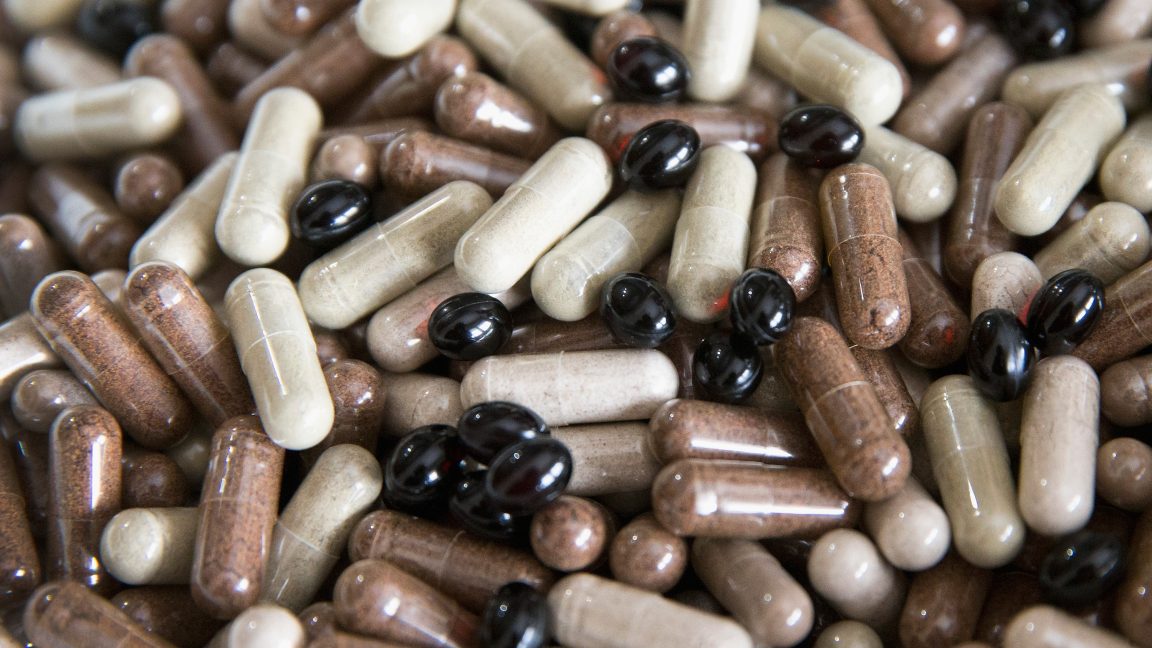- Регистрация
- 17 Февраль 2018
- Сообщения
- 39 347
- Лучшие ответы
- 0
- Реакции
- 0
- Баллы
- 2 093
Offline
The 61-year-old had wounds all over, a bacterial infection, and needed intensive care.


Credit: Getty | Scott Olson
A 61-year-old man in California is lucky to be alive after a combination of herbal supplements he was taking for joint pain ended up utterly wrecking his body, landing him in intensive care and in a delirious state for months. His case is reported in the Annals of Internal Medicine: Clinical Cases.
The man turned up at a hospital in San Francisco in bad shape, but with nonspecific problems that had begun just two days earlier. His back hurt, he was feverish, nauseous, bloated, and he hadn’t been eating much. He was so weak he couldn’t walk or get out of bed without help. His heart rate and breathing rate were high. His blood pressure was low. There were multiple wounds on his lower body in various stages of healing.
Initial exams and lab work revealed Staphylococcus aureus bacteria in his blood. There was also an abscess on his shoulder and an infection in and around his spine, which was worsening. Doctors wanted to perform a surgical procedure to relieve the pressure building up on his spinal cord and nerves, but his blood pressure was too low—and then he went into hemorrhagic shock from bleeding in his gastrointestinal tract. Doctors transferred him to the intensive care unit.
There, evaluations of his GI tract found more problems: his esophagus was severely inflamed, there was an ulcer in his stomach, and an “oozing” ulcer in the upper part of his small intestines. Though doctors were able to stabilize the bleeding in his GI tract, he kept going downhill. His blood pressure dropped further, and his breathing deteriorated, leading doctors to intubate him.
Haywire hormones
At that point, doctors became suspicious that there was something wrong with his adrenal glands. These glands, which sit on top of the kidneys, make steroid hormones, including the glucocorticoid cortisol, sometimes called the “stress hormone.” In response to stressors, complex interactions and feedback loops between the hypothalamus (a hormone-coordinating part of the brain) the pituitary gland and the adrenal glands control the release of cortisol—this is called the hypothalamic–pituitary–adrenal axis (HPA axis). From there, cortisol plays a variety of critical roles in the body, including helping to control blood pressure, suppressing immune responses, regulating blood glucose, and controlling metabolism. When the axis is disrupted and cortisol isn’t being released as it should be, it can result in nonspecific symptoms similar to the man’s case in a condition called adrenal insufficiency.
The man’s doctors consulted with endocrinologists and soon confirmed the suspicion—he had low cortisol levels and low levels of a hormone produced by the pituitary gland that spurs the release of cortisol.
The doctors got to work trying to figure out what was causing his adrenal insufficiency, which can be caused by various problems, from an autoimmune attack to cancer. But it was a conversation with the man’s family, rather than medical tests, that revealed the root cause.
The man’s family told doctors that, up until a few months prior, he had been taking three different types of herbal supplements that claim to treat joint pain. The man had taken the supplements for four years, and sometimes as often as four times a day, but he had stopped using them in the lead-up to his illness.
Deadly doses
The supplements were: Artri King, Nhan Sam Tuyet Lien, and Linsen Double Caulis Plus. All are known to contain unlisted glucocorticoids, according to the Food and Drug Administration. And testing of two of the man’s supplements by the hospital confirmed the presence of the steroids.
Doctors determined that the man had essentially overdosed on the glucocorticoids—he had taken doses that exceeded the normal levels of glucocorticoids in the body. The steroids likely suppressed immune responses, leading to his infections and GI ulcers. But, more significantly, the excess steroid levels also caused his HPA axis to essentially shut down. While it’s possible to get the HPA axis back up and running after withdrawal from excessive steroid use, the amount of time that takes can vary. Further, if a person stops taking large doses of glucocorticoids abruptly, rather than gradually—as in the man’s case—and particularly after chronic use—also as in the man’s case—it can lead to an adrenal crisis. In retrospect, the man had all the signs of a crisis.
The doctors started treating him with hydrocortisone (medication cortisol) to get him out of danger. But it took six weeks before his HPA axis showed signs of recovery on tests. By that time, he had developed recurrent bacterial infections in his blood and had persistent delirium. It was only after several months in the hospital that he was able to be discharged back home.
In the end, the doctors describe the man’s case as a cautionary tale. Many Americans use supplements, but their efficacy is largely unproven, and they are not rigorously regulated for safety. And even though, in this case, the FDA had issued warnings specifically about the three supplements the man took, his case highlights that public awareness of such dangers remains low.
“Clinicians must remain vigilant in assessing supplement use and educate patients on potential risks, particularly regarding hidden glucocorticoids, to prevent serious health complications such as adrenal insufficiency,” the doctors conclude.


Credit: Getty | Scott Olson
A 61-year-old man in California is lucky to be alive after a combination of herbal supplements he was taking for joint pain ended up utterly wrecking his body, landing him in intensive care and in a delirious state for months. His case is reported in the Annals of Internal Medicine: Clinical Cases.
The man turned up at a hospital in San Francisco in bad shape, but with nonspecific problems that had begun just two days earlier. His back hurt, he was feverish, nauseous, bloated, and he hadn’t been eating much. He was so weak he couldn’t walk or get out of bed without help. His heart rate and breathing rate were high. His blood pressure was low. There were multiple wounds on his lower body in various stages of healing.
Initial exams and lab work revealed Staphylococcus aureus bacteria in his blood. There was also an abscess on his shoulder and an infection in and around his spine, which was worsening. Doctors wanted to perform a surgical procedure to relieve the pressure building up on his spinal cord and nerves, but his blood pressure was too low—and then he went into hemorrhagic shock from bleeding in his gastrointestinal tract. Doctors transferred him to the intensive care unit.
There, evaluations of his GI tract found more problems: his esophagus was severely inflamed, there was an ulcer in his stomach, and an “oozing” ulcer in the upper part of his small intestines. Though doctors were able to stabilize the bleeding in his GI tract, he kept going downhill. His blood pressure dropped further, and his breathing deteriorated, leading doctors to intubate him.
Haywire hormones
At that point, doctors became suspicious that there was something wrong with his adrenal glands. These glands, which sit on top of the kidneys, make steroid hormones, including the glucocorticoid cortisol, sometimes called the “stress hormone.” In response to stressors, complex interactions and feedback loops between the hypothalamus (a hormone-coordinating part of the brain) the pituitary gland and the adrenal glands control the release of cortisol—this is called the hypothalamic–pituitary–adrenal axis (HPA axis). From there, cortisol plays a variety of critical roles in the body, including helping to control blood pressure, suppressing immune responses, regulating blood glucose, and controlling metabolism. When the axis is disrupted and cortisol isn’t being released as it should be, it can result in nonspecific symptoms similar to the man’s case in a condition called adrenal insufficiency.
The man’s doctors consulted with endocrinologists and soon confirmed the suspicion—he had low cortisol levels and low levels of a hormone produced by the pituitary gland that spurs the release of cortisol.
The doctors got to work trying to figure out what was causing his adrenal insufficiency, which can be caused by various problems, from an autoimmune attack to cancer. But it was a conversation with the man’s family, rather than medical tests, that revealed the root cause.
The man’s family told doctors that, up until a few months prior, he had been taking three different types of herbal supplements that claim to treat joint pain. The man had taken the supplements for four years, and sometimes as often as four times a day, but he had stopped using them in the lead-up to his illness.
Deadly doses
The supplements were: Artri King, Nhan Sam Tuyet Lien, and Linsen Double Caulis Plus. All are known to contain unlisted glucocorticoids, according to the Food and Drug Administration. And testing of two of the man’s supplements by the hospital confirmed the presence of the steroids.
Doctors determined that the man had essentially overdosed on the glucocorticoids—he had taken doses that exceeded the normal levels of glucocorticoids in the body. The steroids likely suppressed immune responses, leading to his infections and GI ulcers. But, more significantly, the excess steroid levels also caused his HPA axis to essentially shut down. While it’s possible to get the HPA axis back up and running after withdrawal from excessive steroid use, the amount of time that takes can vary. Further, if a person stops taking large doses of glucocorticoids abruptly, rather than gradually—as in the man’s case—and particularly after chronic use—also as in the man’s case—it can lead to an adrenal crisis. In retrospect, the man had all the signs of a crisis.
The doctors started treating him with hydrocortisone (medication cortisol) to get him out of danger. But it took six weeks before his HPA axis showed signs of recovery on tests. By that time, he had developed recurrent bacterial infections in his blood and had persistent delirium. It was only after several months in the hospital that he was able to be discharged back home.
In the end, the doctors describe the man’s case as a cautionary tale. Many Americans use supplements, but their efficacy is largely unproven, and they are not rigorously regulated for safety. And even though, in this case, the FDA had issued warnings specifically about the three supplements the man took, his case highlights that public awareness of such dangers remains low.
“Clinicians must remain vigilant in assessing supplement use and educate patients on potential risks, particularly regarding hidden glucocorticoids, to prevent serious health complications such as adrenal insufficiency,” the doctors conclude.
